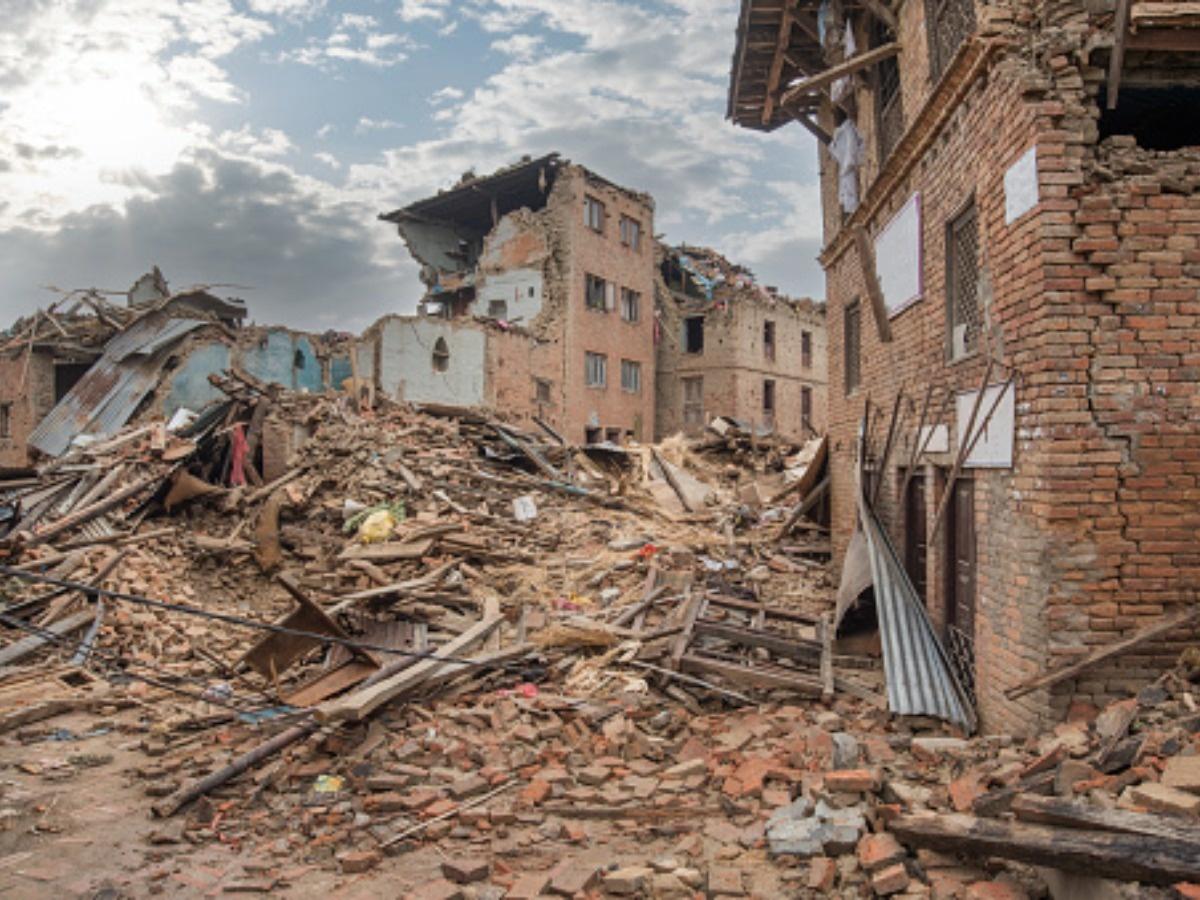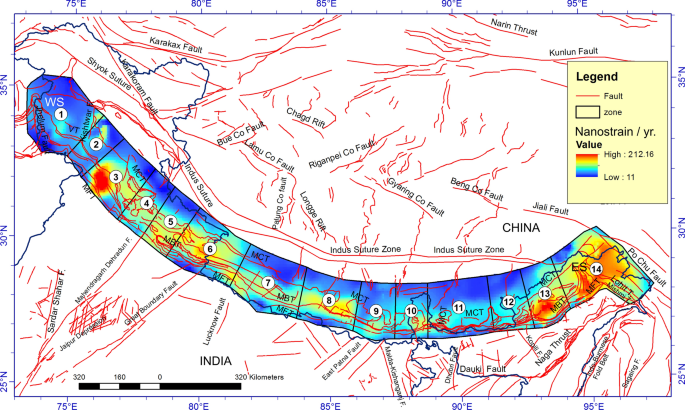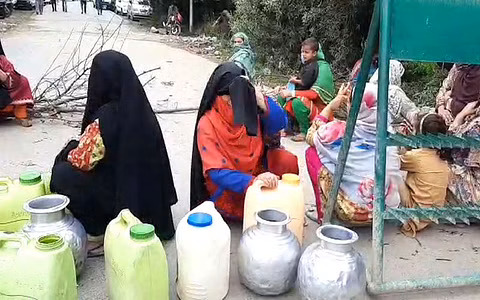Experts warn that the earthquake-prone valley must step up its seismic-resilience game.
By: Sajid Raina & Attaul Munim Zahid
The earthquake that struck Turkey and Syria last year had a profound impact on Kashmir, heightening concerns about the potential devastation caused by earthquakes. This anxiety, although transient in the immediate aftermath of such events, frequently affects the people of Kashmir.
From January to June of this year, Jammu and Kashmir experienced 32 seismic events, with magnitudes ranging from 3.2 to 5.4 on the Richter scale. These tremors serve as a stark reminder of the region’s susceptibility to seismic activity, and while many of them go unnoticed by the population, they collectively signal a sobering warning that a significant earthquake could strike the area at any given moment.
The region under federal control, which was divided and downgraded to a union territory in 2019, predominantly falls within seismic Zone V, signifying its high susceptibility to earthquakes. The fact that approximately 100 earthquakes have been recorded in Jammu and Kashmir and Ladakh over the past two years serves as a testament to the imminent threat posed by this potentially catastrophic phenomenon.
A 2015 study that examined historical and recent earthquake data in northern India determined that various areas within the Jammu and Kashmir region exhibit a spectrum of seismic activity, ranging from moderate to extremely high levels.
Throughout its history, the region has witnessed significant and destructive earthquakes, including some of the most formidable seismic events in India. Kashmir’s earthquake of 2005, for instance, claimed the lives of a minimum of 1,350 individuals and left 6,266 others injured.
Why Experts Worry
Experts have occasionally issued warnings regarding the region’s historical seismic activity, acknowledging the inherent challenge of reliably predicting earthquakes. In 2011, renowned US-based seismologist Roger Bilham cautioned that the area could be at risk of experiencing a catastrophic earthquake with a magnitude as high as 9.0 due to the accumulation of stress in the region.
“Except for holding a few earthquake awareness programmes the, Jammu and Kashmir government has done nothing to reduce the likely impact of the impending disaster,” Bilham, who has done GPS work in the Himalayas, said. “Construction activity goes on haphazardly without any concern for soil conditions or topography or building codes.”
“The zone would encompass the Kashmir Valley, including the Srinagar city with its 1.5-million strong population. If slippage occurs over a length of 300 kilometers, as is possible, a mega quake of magnitude-9 is likely to occur. Given building codes and population in the region, it could mean a death toll of 300,000 people,” Bilham’s study reads.
In a 2018 assessment of seismic hazard and probability in the Kashmir Valley, it was observed that despite the region’s well-documented history of high earthquake risk and vulnerability, the prevailing building construction practices do not incorporate earthquake-resistant designs or structural considerations. This raised concerns about the safety of local infrastructure in the event of an earthquake in one of the Valley’s densely-populated towns or cities.
“Even most of the public infrastructures like schools, hospitals, shopping malls, industrial estates, etc., are built without any safeguard measures for earthquake resistance which increases the risk of the people and public,” the study reads.
Experts also raised concerns about the construction of reservoirs in Kashmir, especially in areas known for seismic activity. This is because the weight of the water in these reservoirs can potentially induce seismicity by exerting increased stress on existing faults (fracture zones between blocks of rocks), potentially leading to the triggering of earthquakes.
Professor M. A. Malik , a senior geologist from University of Jammu, explained that the weight of reservoir water can bring about alterations in subsurface pressures and stress distribution, which has the potential to activate pre-existing seismic features or even generate new fractures.
He added that the filling and draining of reservoirs can induce cyclical loading and unloading of the Earth’s crust, further heightening the potential for seismic events.
But these events are rare. “We find only one example of possible reservoir induced seismicity, which happened in 1967 in India. The rising water level increased the pressure on the faults in the region, potentially triggering the earthquake,” he told FairPlanet.
The Koynanagar earthquake, as cited by Malik, resulted in catastrophic outcomes, including the loss of lives and extensive infrastructure damage. This incident brought heightened attention to the potential dangers associated with large dams and reservoirs in seismically active regions. It also brought to the surface, Malik emphasised, the imperative need for a meticulous evaluation of geological and seismic factors during the design and operation of such structures in order to mitigate the risk of reservoir-induced seismic events.
There are currently 19 operational hydroelectric power plants in Jammu and Kashmir, with six more large-scale projects underway in the Chenab valley. Completing these projects, as stressed by Malik, would create a dense network of dams in the region, potentially increasing pressure on subsurface fault lines and raising the risk of earthquakes.
For example, in August 2022, the Kashmir valley encountered 13 earthquakes in less than five days. The Kishtwar Fault traverses beneath or in close proximity to these reservoirs, and, according to Malik, it is evident that the construction of large dams is the principal factor behind the heightened seismic activity in the region. While the professor acknowledged that further research is needed for a complete understanding, experts primarily attribute the apparent cause of these earthquakes to the presence of dams.
“Usually assessments and geological studies are conducted before such constructions to understand the seismicity of the area and evaluate the potential for induced seismic activity,” Malik said.
Quake-Proof Construction
Buildings that cannot withstand the force of tremors during an earthquake can transform a hazard into a full-blown disaster.
Sameer Hakim Hamdani, a conservationist architect and author of The Syncretic Traditions of Islamic Religious Architecture of Kashmir, believes that incorporating traditional architectural techniques and materials from historical building styles can enhance earthquake resistance by leveraging time-tested methods that have demonstrated resilience to seismic forces.
“Traditional buildings are what we call non-engineered structures. And, if you look at American codes, you find that they are dealt with separately and are not judged based upon our modern engineering knowledge,” he told FairPlanet. “This practice actually acknowledges that there is an inherent knowledge at the core of our historic buildings, which has evolved and expanded, based on experience and observation and needs to be respected as such.”
“Our modern understanding of materials and material behaviour,” he added, “can help us in preservation of these building elements; they should be complementary and not a replacement.”
Hamdani highlighted that a close examination of the local architecture, especially the traditional designs, reveals that the majority of homes were constructed using two main structural models referred to as Taq and Dhajji Dewari. These techniques incorporate a combination of stone, Maharaji brick (or metric bricks) and timber for floors and trusses.
The integration of timber, which starts at the foundation (Dassa) and continues at every floor (Virama), does not only inter-connect building elements but also enables the structure to flex during earthquakes, which historically aided in granting structures seismic resilience.
When examining timber-braced houses, known as Dhajji Dewari, these buildings exhibit earthquake resilience by facilitating controlled movement during seismic events. This architectural technique was further improved by the British, who introduced diagonal bracing, a feature that was historically absent in traditional Kashmiri designs.
Notably, multi-story buildings in Kashmir frequently incorporated a lighter top floor achieved by reducing wall thickness to either 9 or 4 inches – a strategy has been proven to be effective in mitigating the impact of seismic events.
Additionally, prominent Kashmiri monuments like the Khanqah-i-Shah Hamdan showcase impressive wooden structures that, despite their weight, have demonstrated notable earthquake resistance. The wooden columns within these religious buildings, which are roughly 18 feet high and lack dowels or pins connecting them to their bases, further contribute to the structures’ ability to sway and absorb seismic forces.
“So what I feel is important is that we understand how traditional building systems and materials work and then draw upon that knowledge and make our own experiments as we go into the future,” Hamdani said.
Experts also believe that retrofitting existing buildings with modern seismic-resistant technologies and materials can significantly improve their earthquake resistance and overall structural integrity.
“Post-2005 earthquake, many buildings were retrofitted […] by the Aga Khan Trust. Even […] studies done by UNDP and National Disaster Management Agency came with recommendations for both retrofitting as well as new construction based on traditional building practices.”
In Kashmir, traditional construction practices have historically favored sustainable materials like wood. But the absence of organised management in the wood sector has forced people to explore more affordable alternatives due to the high costs associated with wood. This compromise has, in turn, undermined the usage of traditional and earthquake-resistant building methods.
“Historically, we used to build in stone, Mahraji bricks and wood. Wood is a sustainable building material, but we never organised this sector as such, barring – you could say – for poplar plantations,” Hamdani added. “Basically, we are just cutting down forests and costs are unaffordable for many. So you go for a cheap replacement, which in our case happens to be RCC [Reinforced Cement Concrete].”
The misconceptions and inadequate awareness about proper reinforced concrete construction practices in Jammu and Kashmir have also led to suboptimal earthquake-resistant measures.
Hamdani emphasised that Kashmir’s grasp and application of RCC often falls short, citing both the overuse and underuse of steel in construction as highly problematic. Similarly, he said, hybrid structures, such as adding a steel pipe or an isolated RCC column wherever deemed necessary, prove ineffective. He stressed that a modern RCC structure must undergo proper design and meticulous on-site implementation to avoid becoming a potential hazard.
“After the 2005 earthquake, many people who constructed their houses were concerned about how their houses would behave in a [future] earthquake. But this lasted for two or three years and as we moved on, we forgot,” he shared.
“Last year, after the tragic earthquakes in Turkey, and also the numerous jolts in Kashmir, we had again rising interest in this subject. But then how long will this last?”. Source
#Kashmir, #Earthquake, #Vulnerability, #Risk, #Preparation, #Awareness, #Safety, #Disaster #SajidRaina, #AttaulMunimZahid






